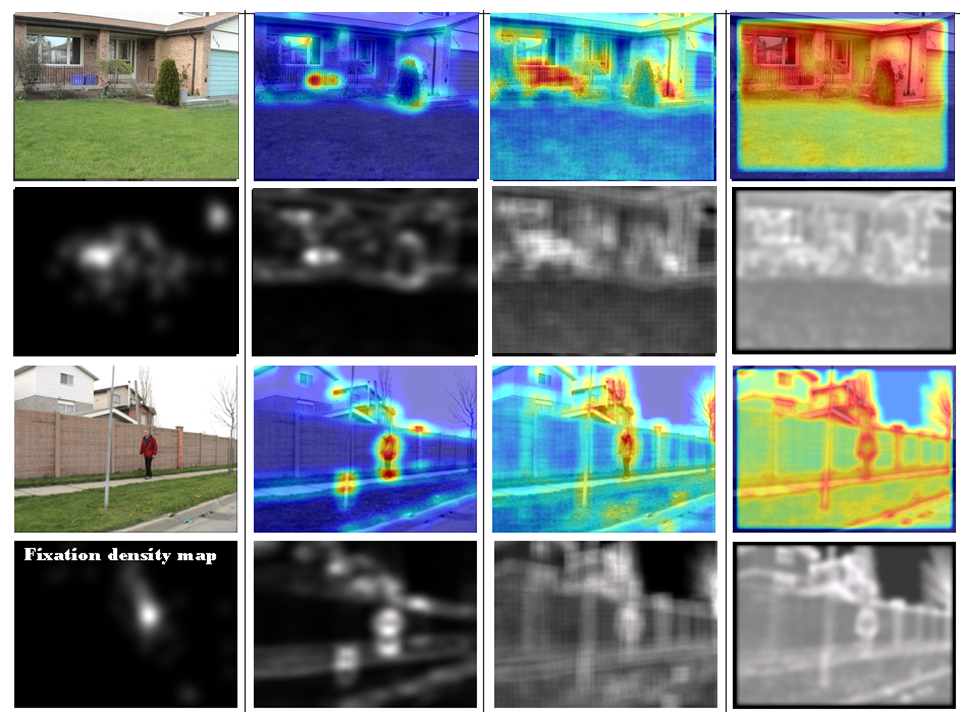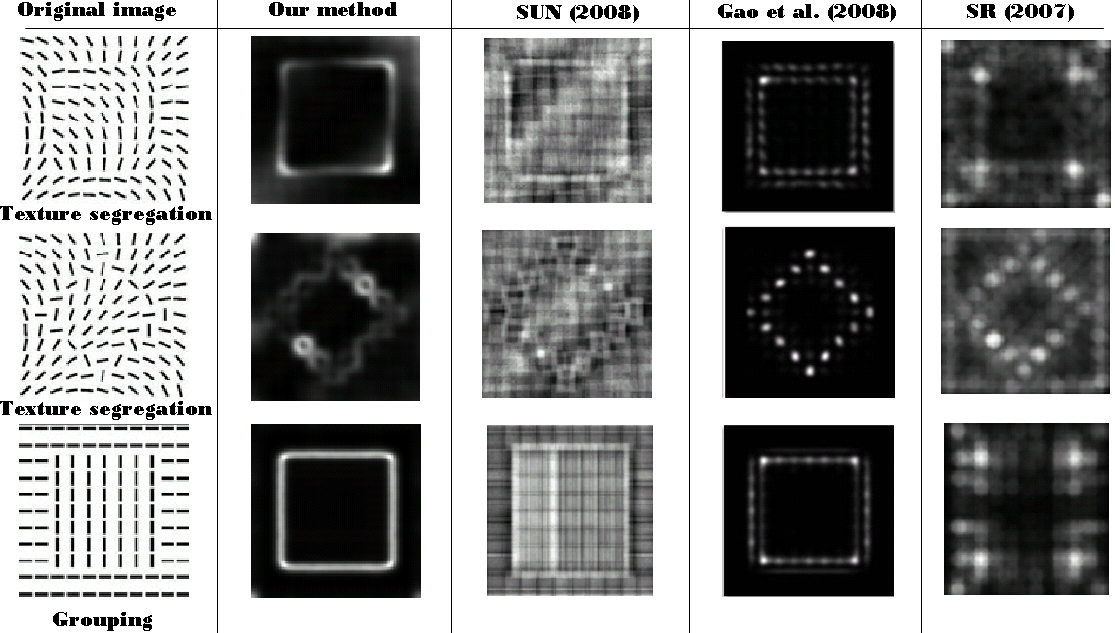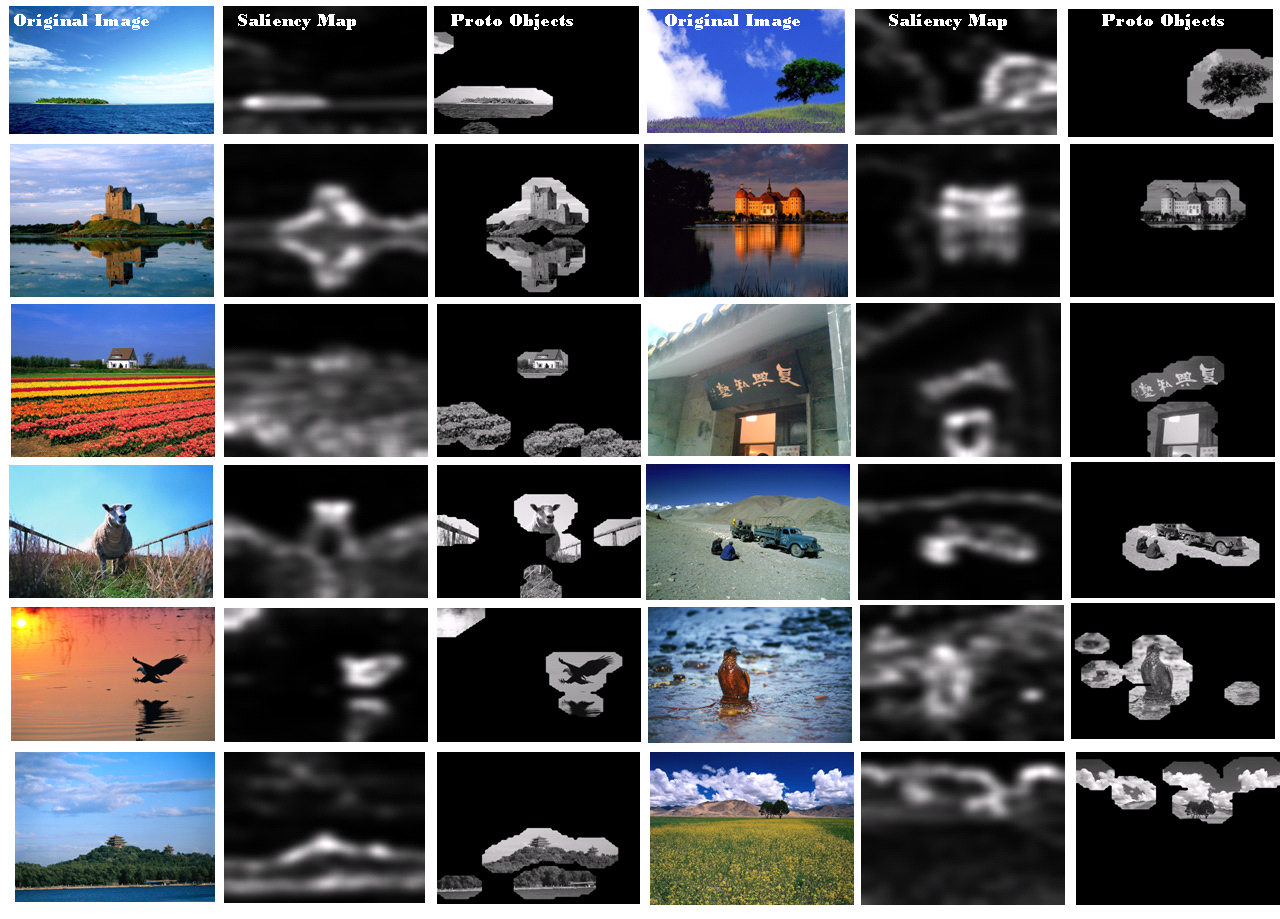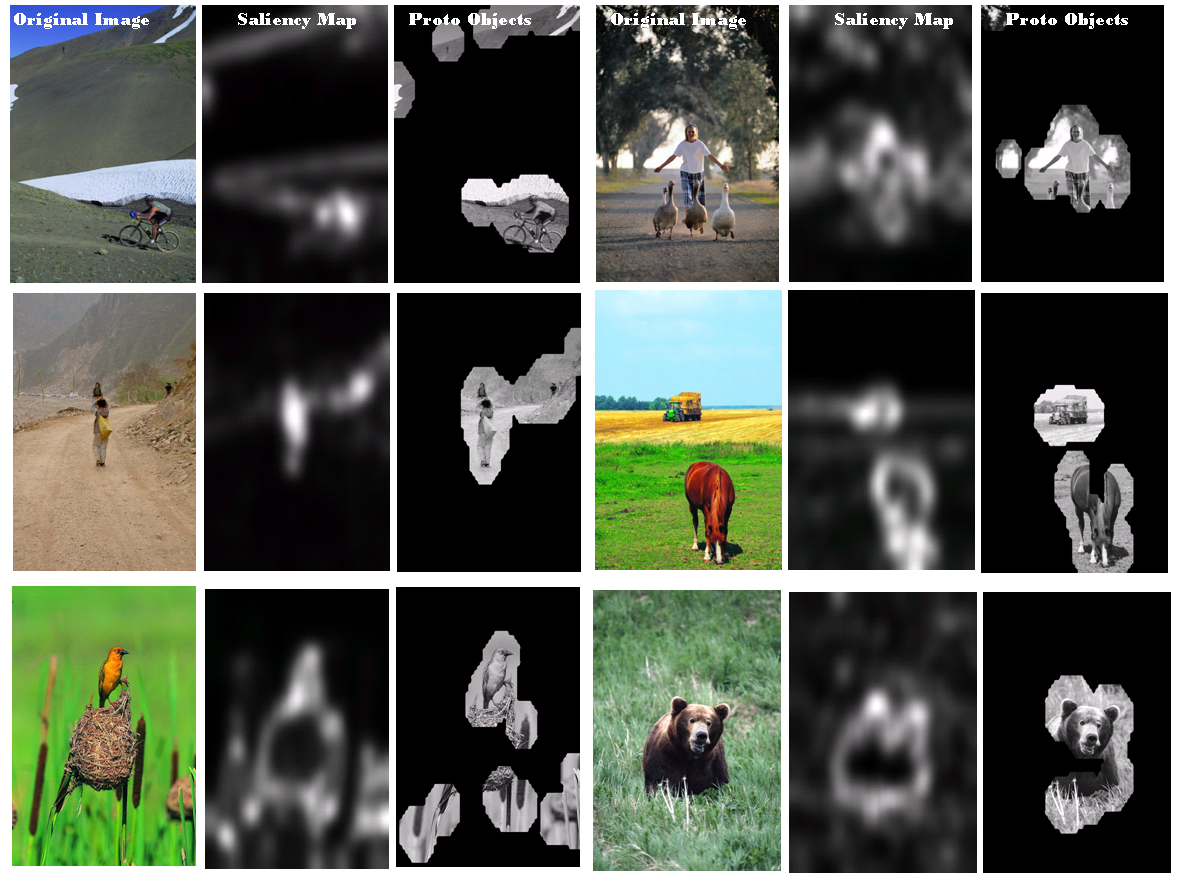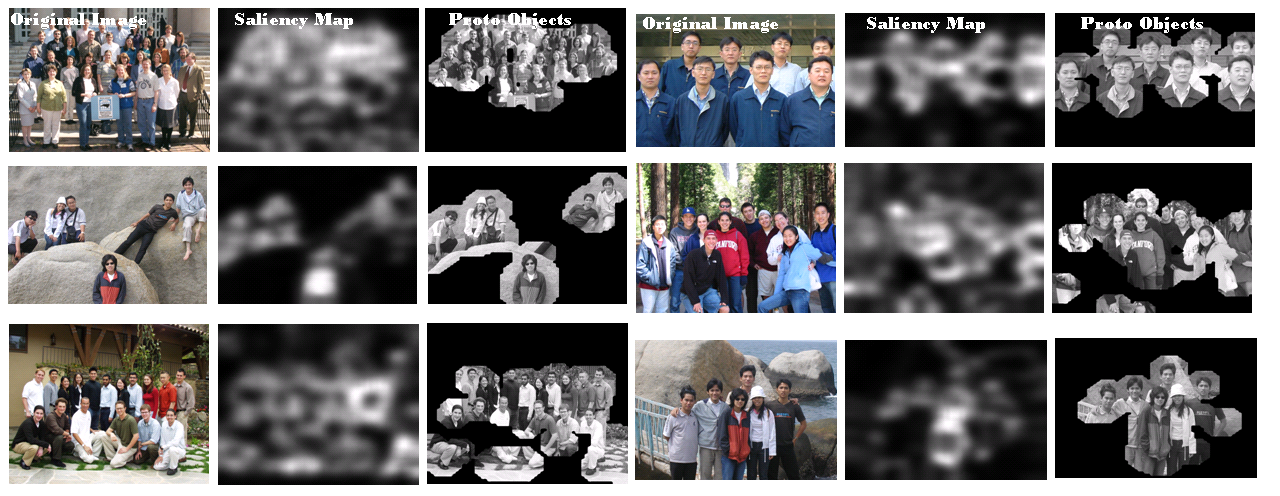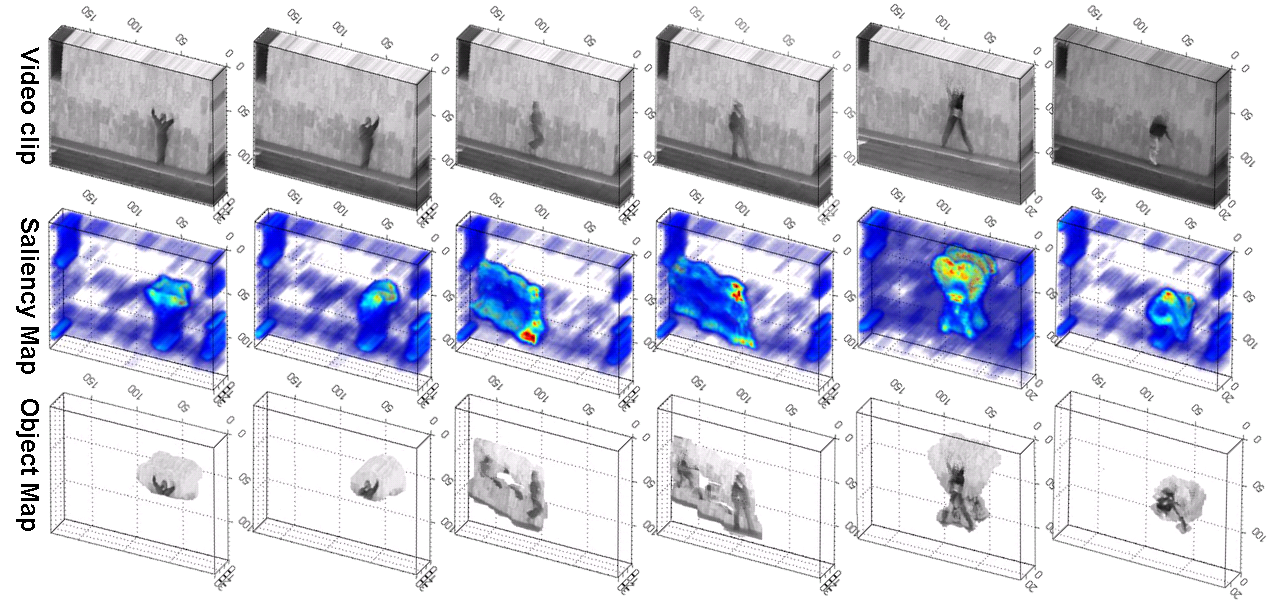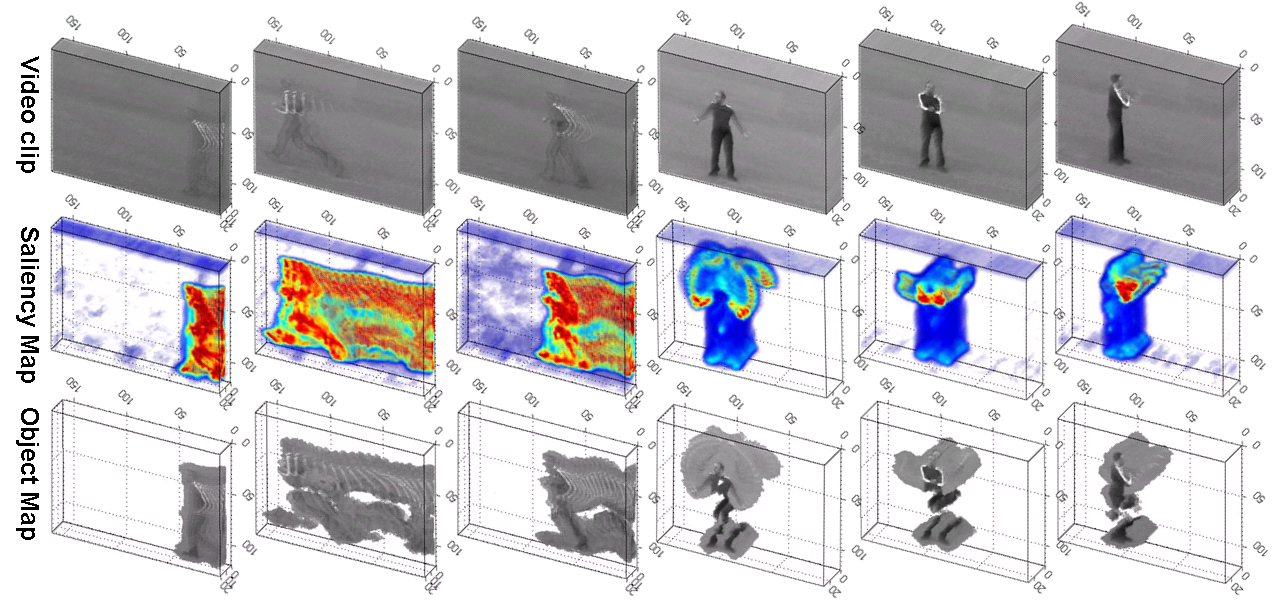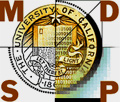| |
We present a novel unified framework for both static and space-time saliency detection. Our
method is a bottom-up approach and computes so-called local regression kernels (i.e., local
descriptors) from the given image (or a video), which measure the likeness of a
pixel (or voxel) to its surroundings. Visual saliency is then computed using
the said ``self-resemblance" measure. The framework results in a
saliency map where each pixel (or voxel) indicates the statistical likelihood
of saliency of a feature matrix given its surrounding feature
matrices. As a similarity measure, matrix cosine similarity (a
generalization of cosine similarity) is employed. State of the art
performance is demonstrated on commonly used human eye fixation
data (static scenes and dynamic scenes) and some psychological patterns.
System Overview
Experimental Results
Matlab Toolbox (New release)
See more details and examples in the following papers
.
Go to object detection page
Go to action detection page
|
| |
The package contains the software that can be used to compute the visual saliency map, as explained in the JoV paper above.
The included demonstration files (demo*.m) provide the easiest way to learn how to use the code.
Disclaimer: This is experimental software. It is provided for non-commercial research purposes only. Use at your own risk. No warranty is implied by this distribution. Copyright ©
2010 by University of California.
File updated: Dec 13 2011
|
|

